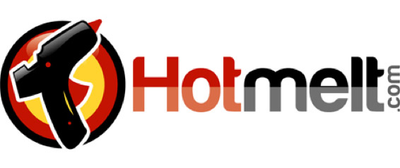Bulk Hot Melt
Filters
Shop Our Extensive Selection of Bulk Hot Melt For Any Application
At Hotmelt.com, we want to help our customers get the best deals on the best products. With our extensive catalog of bulk hot melt products sourced from top manufacturers in the industry, we're able to offer factory direct pricing on EVA, Metallocene, PSA, Fugitive, APAO, and more. Beyond just a sale, we also want to ensure customers get the most out of their products. Contact one of our experts to see if you’re eligible for a free sample, or ask about a free consultation to improve your bulk hot melt application and start lowering your dispensing costs today.
Why Choose Hotmelt.com for Your Bulk Hot Melt Needs?
Why Hotmelt.com for your bulk hot melt needs? Because we carry top bulk hot melt brands like Infinity Bond, HB Fuller, Henkel Adhesives, Warren, Jowat Adhesives, and more. As one of the largest bulk hot melt distributors in North America, we can ensure you will always receive the best pricing on the market. Don't let a manufacturer or inexperienced distributor try and solve your solution with a product that works best for them. Instead, work with our bulk hot melt experts to find an adhesive solution that works best for you.
Ask a question about Bulk Hot Melt
Questions about these products? Not sure what's best for your application? Our hot melt experts can help. Submit your questions and we'll get you answers right away. We're here to help.
Categories
Filters
Ask a Question
Questions about these products? Not sure what's best for your application? Our hot melt experts can help. Submit your questions and we'll get you answers right away. We're here to help.
Common Questions About Bulk Hot Melt
Hot melt or hot glue consists of thermoplastic polymers that are melted and applied in a moten state that become a solid again as they cool. Hot melt glue is used in both commercial and residential applications. There are a wide range of hot melt formulations that can be tailored to meet specific application needs.
Hot melt adhesives provide a wide range of benefits. Hot melt glue is easy to apply, sets quickly and is relatively inexpensive compared to other types of adhesives.
Other Benefits of hot melt glue include:
- Cost effective
- Easy to use and apply
- Formulas made for a variety of applications/materials
- Easy to store - no shelf life
- Provides strong bonds to a wide range of substrates
When using bulk hot melt, the amount you need will depend on the size of the bead being dispensed. Here is an easy chart to estimate how many linear feet of hot melt are produced by one LB of hot melt at various bead sizes.
| Bead Size (Half Round) | Approximate Linear Feet per LB |
| 1/16" Diameter Bead | 1500 Feet per LB |
| 1/8" Diameter Bead | 260 Feet per LB |
| 3/16" Diameter Bead | 180 Feet per LB |
| 1/4" Diameter Bead | 125 Feet per LB |
| 3/8" Diameter Bead | 60 Feet per LB |
| 1/2" Diameter Bead | 30 Feet per LB |
Hot melt open time is a term referred to the amount of time a user has after applying hot melt glue before the product sets up. Short open time hot melt adhesives are used in applications like packaging and product assembly. Long open time hot melts are used in spray applications or when bonding large surfaces where more time is required to apply and compress your substrates.
Yes! There are many different types of hot melt glue. Common types of hot melt include EVA, Metallocene, Pressure Sensitive (PSA), Polyamide and Polyurethane (PUR) hot melt.
EVA Hot Melt (Ethylene Vinyl Acetate) This polymer is suitable for both packaging and assembly formulas. It is economical and effective at service temperatures from -22 to 176 degrees F (-30 to 80 degrees C). EVA is the most common type of hot melt and used in applications like packaging, product assembly and for making glue sticks.
Polyamide Hot Melt (PA) This polymer used to formulate adhesives to create a better resistance to temperature extremes and chemicals -76 to 266 degrees F(-60 to 130 C). Polyamide is an expensive product that offers high heat resistance compared to traditional EVA products.
APAO Hot Melt (Amorphous Polyolyfin) This polymer often used in spray formulations, to create specific adhesion properties like delayed setting time it's effective at -22 to 230 degrees F(-30 to 110 C).
Polyurethane Hot Melt (PUR) Similar to the tradition hot melt, except after it solidifies PUR absorbs small amounts of moisture. The intake of moisture creates a permanent chemical change after several days. This chemical change increases both heat and chemical resistance of this adhesive. The chemical reaction allows the PUR to form a structure bond similar to that of epoxies, but in less time. PUR is perfect for numerous applications, but is commonly used in woodworking.
Hot glue was invented around 1940 by Paul Cope a Chemical & Packaging Engineer for Procter & Gamble. He invented it as an improvement to water-based adhesives that were failing in humid climates.






